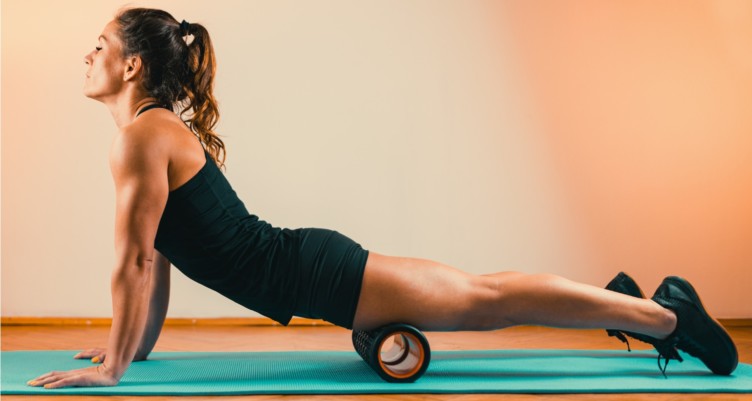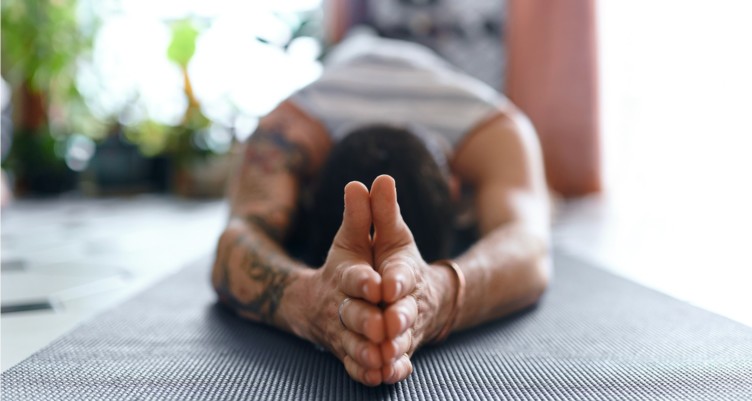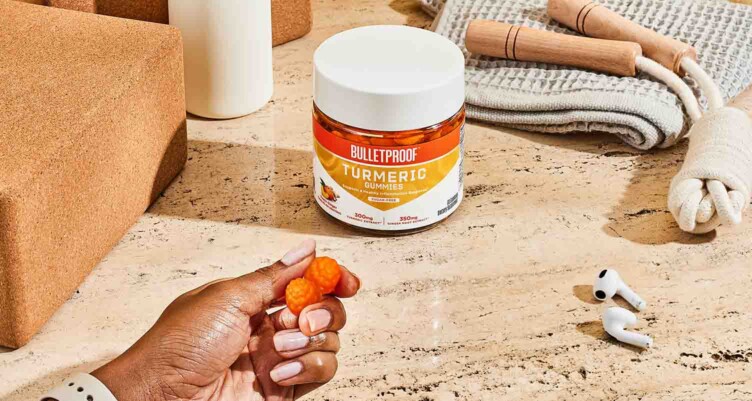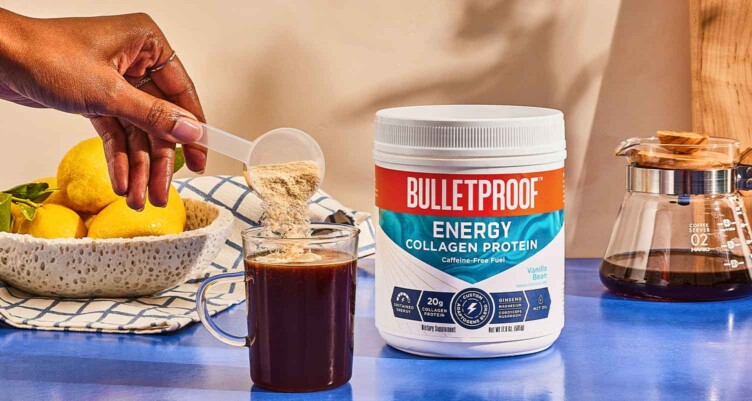Not Sure What to Do on Rest Days? Learn 10 Ways to Optimize Your Workout Recovery

- Including rest days in your workout routine can help lessen the chances of overuse injuries and give your body time to recover.
- While you should avoid intense exercise on your recovery days, you can do a light cardio session or another low-impact form of movement to stimulate blood flow to sore muscles.
- Ready to make the most of your rest days? Learn how everything from sleep to supplements to self-care can help put you in the best position to dominate your next workout session.
While beginners may be eager to get back in the gym right away, personal trainers and experienced strength training enthusiasts understand the importance of rest days. After all, overtraining can lead to mental and physical burnout—neither of which will help you unleash your limitless potential.
But what exactly should you do on your day off from weight lifting or intense workouts? If your current version of an active recovery day simply includes stretching and foam rolling, you’re about to learn some new tricks that’ll completely transform your routine. From what you put into your body to how you move, we’ll show you what to do on rest days so you can optimize your recovery and continue crushing your fitness goals.
Why rest days belong in your workout routine

Whether you have a specific weight loss goal or you want to gain strength and build muscle, you should dedicate the same amount of care to your recovery as your training. Sure, it might seem counterintuitive to hit pause when you’re making progress. However, your body needs time to allow damaged muscle groups to repair. Plus, your mind can benefit from an active rest day that’s not nearly as mentally demanding or emotionally draining as a regular workout.
Ultimately, you want to strike the right balance between high-intensity physical activity and recovery. That doesn’t mean you should spend your rest day watching Netflix and remaining sedentary, though. It just means dialing things back with low-intensity activities that’ll assist with getting your body back to as close to 100% as possible.
Keep in mind that if your weekly workout regimen includes several HIIT and weight training sessions, you may want to pencil in multiple rest days. Otherwise, one “day off” should provide an excellent opportunity to optimize your recovery. Neglecting it entirely, on the other hand, could easily leave you feeling fatigued, moody and unable to perform at your best.
Related: Strength vs. Cardio: Is One Better Than the Other?
10 ways to optimize your workout recovery

Think you’re hitting all the marks with your recovery routine? Once you get through this list, you’ll probably realize you have some room to improve your protocol.
Here are 10 ways to optimize your rest days that you can implement immediately.
1. Get quality sleep
It’s one thing to rest. It’s another to get quality rest. And when we’re talking recovery, perhaps no factor is more critical than good sleep.
After putting your body under stress in the gym, you need to show it some love when you’re at home. One of the main goals of your rest day should be to get enough quality sleep to feel refreshed and rejuvenated for your next workout.
Disconnecting from the digital world is one step in the right direction, but you can take things even further with some help from supplements. Bulletproof Sleep Mode is a non-habit forming, drug-free solution made with L-ornithine and plant-based melatonin to help reduce stress and help you ease into a healthy sleep. If you are looking for a bit more melatonin, try out the Bulletproof Sleep Gummies for a better sleep.†
2. Take an Epsom salt bath

Looking to optimize your recovery with minimal effort? It doesn’t get much simpler than taking an Epsom salt bath.
With magnesium sulfate as its primary ingredient, Epsom salt is often utilized for recovery purposes. A ratio of 2 cups per 1 gallon of water works best, and a 12-minute soak can help increase your magnesium levels.[1][2]
3. Engage in active recovery
An active rest day could include any number of low-impact aerobic activities that stimulate blood flow without cranking your heart rate through the roof. It could be as simple as going for a 30-minute walk to stretch your legs and soak up some vitamin D.
Other active recovery options include:
- Swimming (excellent for full-body engagement)
- Pilates
- Yoga
- Light jogging
- Cycling (low intensity)
4. USE SUPPLEMENTS

Training hard may lead to at least some acute inflammation, as exercise is a stressor on our muscles, joints and ligaments. However, you can give your body a boost on your rest days by using supplements.
Turmeric Curcumin Complex does just that via a blend of plant-based ingredients that includes boswellia, ginger and whole turmeric complex. Curcumin, the active compound in turmeric, has been shown to support a healthy body and can help combat oxidative stress.†[3]
For more support in a fun format, add Bulletproof Turmeric Gummies to your supplement stack. Get in the habit of taking these sugar-free Peach Ginger-flavored supplements as a daily treat.
Related: 6 Inflammatory Foods—And What to Eat Instead
5. Work on your mobility
It’s common to feel a bit sore and stiff after a hard workout. However, don’t let that dissuade you from working on your mobility. Use your rest day to work on improving your flexibility and range of motion. A static stretching routine is a solid place to start, as you should aim to ease some of the tension off your lower back, hamstrings, hip flexors and shoulders.
For optimal recovery, though, you should incorporate two other activities: foam rolling and yoga. A foam roller is a useful and relatively inexpensive tool that belongs in everyone’s recovery repertoire. Be prepared for some pain and discomfort, but rest assured that the myofascial release will help relieve some of that delayed onset muscle soreness (DOMS) you may experience post-workout.[4]
Meanwhile, attending a yoga class (or even doing it virtually at home) is a great way to work on your mobility. Both your mind and your body will benefit from this stress-relieving form of active recovery. You might be surprised at how flexible you are—and you’ll also quickly discover which areas you need to work on.
6. Consume collagen protein

If you care about feeding your body the right nutrients, it’s important to make sure you’re consuming collagen protein—especially on rest days. This key protein serves as the building block for healthy muscles, bones and joints.
Whether you use Bulletproof Chocolate Collagen Peptides to make some Keto Cheesecake Brownies (who says you can’t do dessert on rest days?), or you mix a scoop of Bulletproof Unflavored Collagen Peptides into your evening cup of tea, there are a number of tasty ways to reap the rewards of collagen.
7. Replenish electrolytes
Hydration is key for both optimal performance and optimal recovery. However, hydrating goes beyond just drinking water. After all, your body needs the right balance of electrolytes to function at its best.
When we exercise, we endure not only muscle damage but also the loss of key micronutrients via sweat.[5] It’s easy to become deficient in electrolytes, including sodium, potassium, chloride, calcium and magnesium, especially after a challenging interval training circuit, lengthy cardio session or high-rep strength workout.
While you can obtain those key minerals through food, supplementing can make things easier. An electrolyte powder that’s free of additives and preservatives is a convenient way to fill any gaps, especially when it comes to sodium replenishment. Additionally, Bulletproof Magnesium provides a science-backed dose of highly absorbable magnesium citrate to support your nervous system, muscles and bones.†
8. Practice self-care

When you’re deciding what to do on rest days, don’t overlook your mental health. As much as your body needs and deserves some TLC, your mind does too.
On your day off from the gym, invest some time in activities that bring fulfillment and positivity to your life. Find an enlightening book to dive into that’ll keep you engaged. Use a journal to document your wins of the week and highlight areas for improvement. Light a few candles, put on some relaxing music and meditate. There are many ways to practice self-care, so embrace the freedom of doing what makes you happy.
Related: Mind-Body Wellness: 8 Practices That Will Help Balance Your Psyche
9. Schedule a float therapy session
Ever considered entering a saltwater sensory deprivation tank void of light and sound on rest days? This recovery practice continues to grow in popularity, and for good reason.
Why float therapy? It promotes relaxation, improved sleep and reduced stress, which can help bring balance and a level of calm to your rest day.[6] With this recovery method gaining significant steam in recent years, you should be able to find a location in your area where you can enjoy the serenity of a float therapy session.
10. Eat satiating, low-carb foods

Targeted or cyclical keto dieters may benefit from eating carbs on training days, but with no high-intensity activities on your schedule, you can load up on quality fats and protein on rest days. Stick to keto-friendly foods like grass-fed steak, whole eggs and wild-caught seafood that’ll keep the amount of quality fats high and provide protein for muscle repair.
View your day off as a chance to experiment with a new recipe you’ve been waiting to try. Not only will cooking your food ensure you’ll stay low carb, but it’ll also allow you to flex your creative muscles in the kitchen. That’s mind-body balance at it’s best.
The bottom line: Working smarter—not harder—is the key to recovery. Treat your rest day as a chance to take care of your body with practices, foods and supplements that’ll assist with muscle repair. You should also use your day off from training for some well-deserved self-care and to find fulfillment in other activities. Follow the strategies outlined above and you’ll be well on your way toward achieving mind-body balance and setting yourself up for success the next time you’re ready to break a sweat.
You know what to do on your rest days, but what about when you’re in the gym? Our guide to fitness and recovery gives you everything you need to know to optimize your performance.
Sign up for early access to sales, product launches, the latest Bulletproof news and more!


